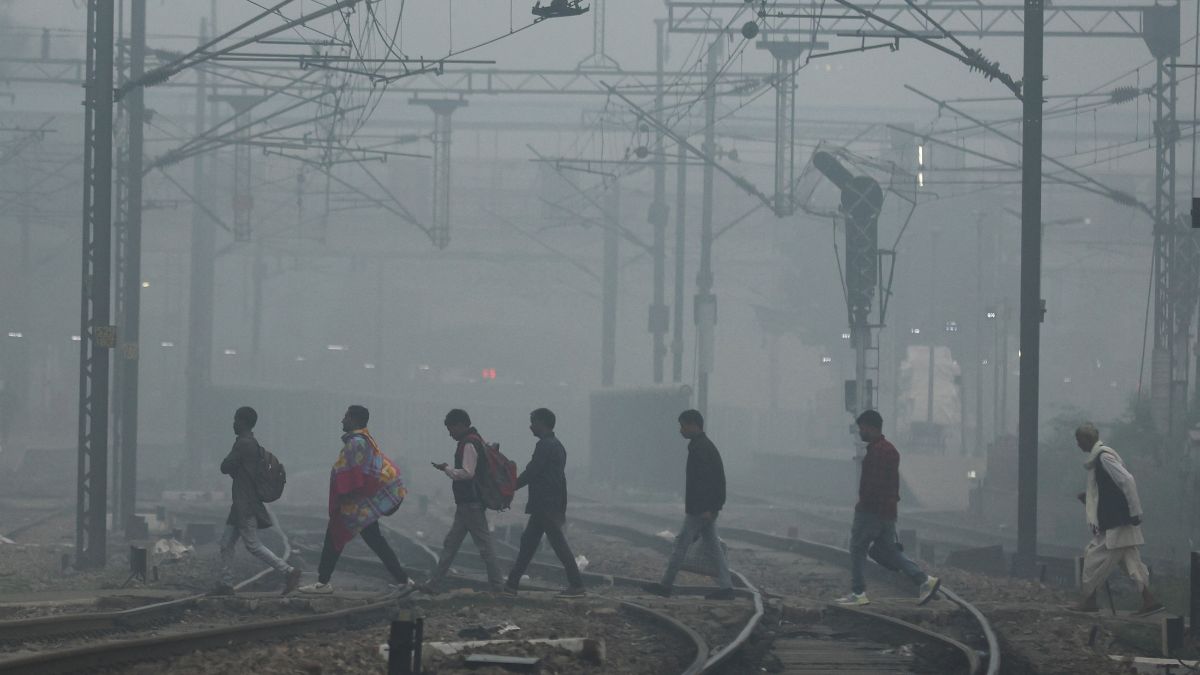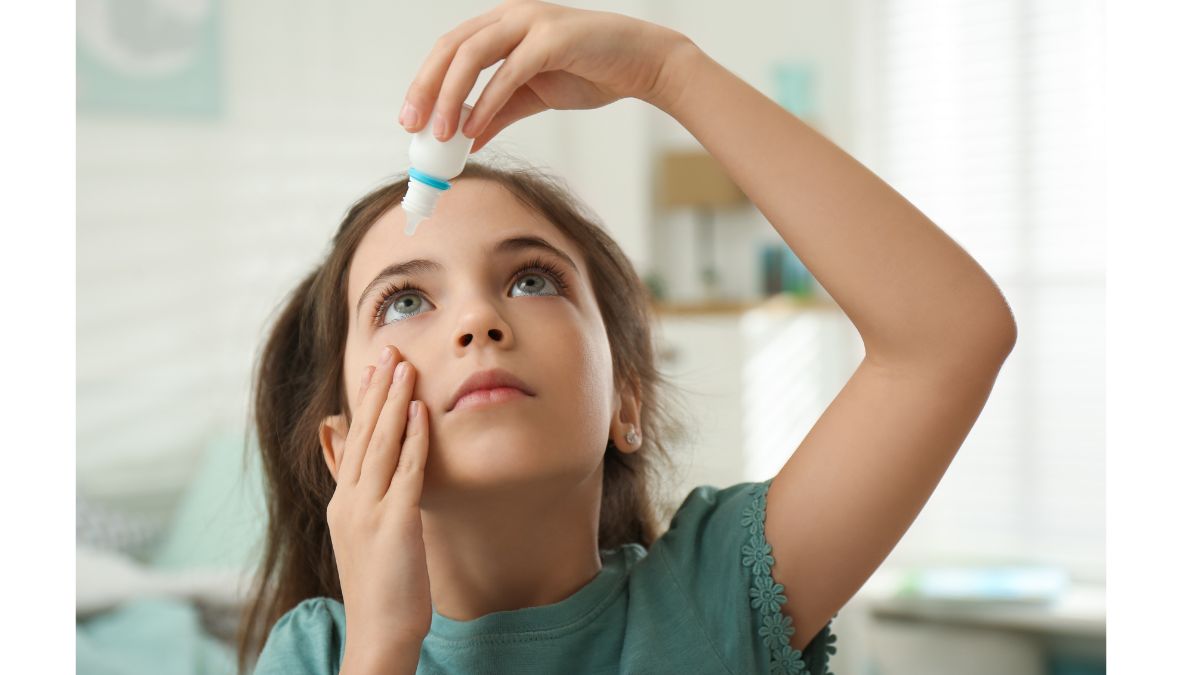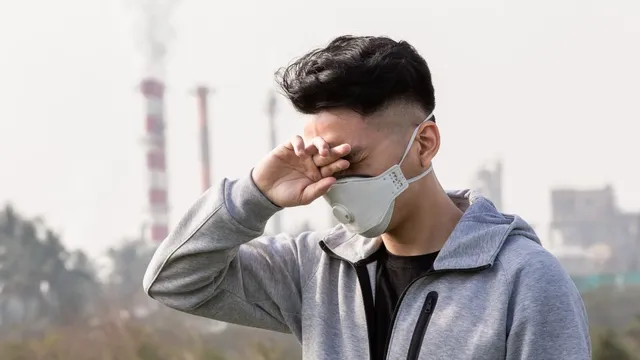- By Prerna Targhotra
- Thu, 21 Nov 2024 05:54 PM (IST)
- Source:JND
Side Effects Of Air Pollution On Eyes: Air pollution has long been associated with respiratory and cardiovascular diseases, but its impact on eyesight is a lesser-known yet significant threat. With cities in India frequently grappling with hazardous air quality, the toll of polluted air on eye health is becoming a growing concern. Prolonged exposure to air pollution doesn’t just cause irritation and dryness, it can lead to chronic conditions and, in severe cases, permanent vision loss. As air quality continues to deteriorate, it is crucial to understand the risks and take proactive steps to safeguard our vision.
In a conversation with Jagran English, Dr. Anurag Wahi, Senior Consultant, Sharp Sight Eye Hospitals explained how adverse air pollution can affect your eyes.
Side Effects Of Air Pollution On Eyes
According to Dr Wahi, the eyes are among the most sensitive organs in the body, constantly exposed to the environment. Airborne pollutants such as fine particulate matter, toxic gases, and chemical compounds directly interact with the surface of the eyes, causing both immediate and long-term damage.
1. Irritation and dryness: Pollutants in the air disrupt the natural tear film that protects the eyes, leading to dryness, itching, and redness. Over time, this disruption can cause chronic dry eye syndrome, which not only causes discomfort but also increases the risk of corneal damage.
2. Inflammation: Exposure to polluted air triggers inflammation in the eyes. This can result in conditions such as conjunctivitis, which, if left untreated, may progress to more serious issues.
3. Oxidative stress: Toxins in polluted air lead to oxidative stress, which damages cells in the cornea and retina. This can result in vision impairment and contribute to age-related eye conditions like macular degeneration.
4. Structural damage: Prolonged exposure to pollutants such as nitrogen dioxide and carbon monoxide can damage the delicate structures of the eye, including the optic nerve. This increases the risk of irreversible vision loss.
Why India Faces Unique Challenge Of Air Pollution
India’s urban centres, known for their dense populations and industrial activities, experience some of the worst air pollution levels in the world. The issue is particularly acute during winter months, when smog blankets cities, reducing visibility and intensifying pollution exposure. Rural areas are not spared either, as biomass burning for cooking and seasonal crop stubble fires release vast amounts of pollutants into the air.

Side-Effects Of Air Pollution On Eyes (Image Credits: Canva)
For many Indians, prolonged exposure to polluted air is unavoidable. Daily commutes, outdoor occupations, and congested living conditions increase the risk of eye-related problems. Moreover, limited awareness about the effects of pollution on vision often delays timely intervention, exacerbating the issue.
How To Protect Your Eyes From Air Pollution
While systemic changes to improve air quality are essential, individuals can take several measures to protect their eyes from the harmful effects of pollution. Here’s how:
1. Wear protective eyewear: Using wraparound sunglasses or clear protective glasses can shield your eyes from direct exposure to airborne pollutants. These are especially useful when travelling in areas with high dust or smog levels.
2. Practise good eye hygiene: Wash your eyes with clean, cold water after being outdoors. This helps flush out irritants and prevents pollutants from settling on the eye surface. Avoid rubbing your eyes, as this can introduce more contaminants.
3. Use lubricating eye drops: Artificial tears or lubricating eye drops can help restore moisture to dry eyes, reducing irritation and preventing long-term damage. Consult an eye specialist to choose the right product for your needs.

Tips To Protect Eyes From Air Pollution (Image Credits: Canva)
4. Maintain indoor air quality: Invest in air purifiers for your home to reduce indoor pollution levels. Ensure proper ventilation but avoid opening windows during high-pollution days, especially in heavily industrialised or urban areas.
5. Stay hydrated: Drinking plenty of water keeps your body and eyes hydrated. Proper hydration supports the natural tear film, which protects the eyes from external irritants.
6. Follow a balanced diet: A diet rich in antioxidants, vitamins, and omega-3 fatty acids supports eye health. Foods like spinach, carrots, nuts, and fish strengthen the eyes and protect them from oxidative damage caused by pollutants.
7. Limit outdoor activities on high pollution days: Check air quality levels before venturing outside, and avoid outdoor activities during times when pollution is at its peak. If stepping out is unavoidable, wearing a mask along with protective eyewear can offer dual protection.
Prolonged exposure to air pollution is a silent threat to our vision, capable of causing long-term damage if ignored. In a country like India, where pollution levels remain high year-round, protecting eye health is not just a personal responsibility but a public health necessity. By combining preventive measures at an individual level with collective efforts to reduce pollution, we can ensure that our eyes remain healthy and our vision, is unhindered by the toxic air we breathe.
ALSO READ: Delhi Air Pollution 2024: 4 Important Reasons Of Wearing A Mask While Stepping Outside Of Home
ALSO READ: Delhi Air Pollution 2024: 5 Health Benefits Of Taking Steam For Just 15 Minutes Every Day

